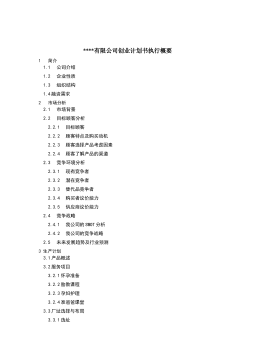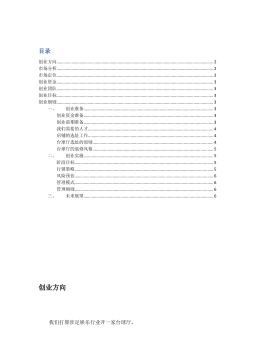USST_Arts_112040599银行资本约束对货币政策信贷传导“扭曲”效应研究
VIP免费
摘 要
传统货币政策信贷传导理论认为,中央银行通过对法定存款准备金的调整,
来影响商业银行信贷决策,进而通过商业银行信贷行为的改变来实现货币政策实
施意图。但这忽略了商业银行资本充裕程度对其信贷决策的影响,进而也就忽略
了银行资本约束对货币政策信贷传导所产生的重要影响。本文从商业银行所面临
的资本约束视角出发,就银行资本约束给货币政策信贷传导带来的“扭曲”效应
进行了数理模型分析和实证分析。
在《巴塞尔协议 I》公布后,各国监管部门便将商业银行资本充足率列为了
监管的首要目标。2010 年12 月《巴塞尔协议 III》发布,伴随其在世界范围内的
广泛实施,各国对银行资本的监管要求达到了新的高度。为适应《巴塞尔协议 III》
的要求,我国在 2012 年颁布运行了《商业银行资本管理办法(试行)》,对银行资
本实施了更为严格的监管。这种监管力度的强化将会给商业银行带来怎样的改
变?这种改变是否会“扭曲”原有货币政策信贷传导渠道?这些问题亟待检验。
本文以货币政策信贷传导渠道和实施效果为立足点,旨在厘清银行资本约束
对货币政策实施效果可能产生的影响,并对可能造成的货币政策信贷传导渠道的
“扭曲”进行了探讨。通过构建数理模型,分析了资本约束对单个商业银行以及
对整个银行系统货币政策信贷传导的影响,并得出了相关结论。在此基础上,本
文采用我国 16 家上市银行 2000 年-2012 年非平衡面板数据,通过门槛回归模型
得到了界定商业银行资本充裕程度的标准,而后以此为依据将样本银行分为资本
充裕银行、资本不充裕银行以及全样本银行三组,最终就银行资本约束给货币政
策信贷传导带来的影响进行了实证分析,实证结论与数理模型分析得出的结论基
本一致。主要结论有以下几点:对资本充裕的商业银行而言,货币政策信贷传导
渠道能够发挥顺畅;对资本不充裕的商业银行而言,货币政策在紧缩和扩张阶段
会表现出明显的非对称性效果:扩张性货币政策信贷传导会受阻,紧缩性货币政
策信贷传导效果将得到强化;就整个银行系统而言,货币政策信贷传导效果由银
行系统内资本充裕银行与资本不充裕银行共同决定:资本充裕银行所占比重越高,
扩张性货币政策传导效果越好,资本不充裕银行所占比重越高,紧缩性货币政策
信贷传导效果越明显。
关键词:货币政策信贷传导 银行资本约束 扭曲效应 实证研究
ABSTRACT
According to the traditional credit channel theory of monetary policy, the central
bank could adjust the legal deposit reserve to influent the credit behaviors of
commercial banks, and then to realize intentions of monetary policy. However, the
theory ignores the impact of the commercial banks' capital constrains on their credit
decision behaviors , and also ignores the major influence produced by the bank capital
constraints on monetary policy conduction via credit channel. Starting from the
perspective of capital constraints faced by commercial banks, this thesis gives several
mathematical models to made qualitative analysis and made empirical analysis on the
twisted effects produced by banks capital constraints on the conduction of monetary
policy via credit channel.
After the publication of "Basel I", the bank regulators of many countries have been
putting capital adequacy ratio of commercial banks as a primary goal of the regulation.
In December 2010, "Basel III" issued, along with its widely implementation in the
world, the capital constrains requirements on commercial banks reached a new height.
In order to adapt to the "Basel III" requirements, in 2012, China promulgated the
"Commercial Bank Capital Management (Trial)" that implemented more stringent
requirements on commercial banks capital constrains. What effect will happen on the
commercial banks credit behaviors ? Whether such an effect would "twist" the
original credit channel of monetary policy conduction? These problems need to be
tested.
Based on the credit channels of monetary policy conduction and the real
implementing effect of capital constrains on commercial banks, this paper aims to
clarify the impact of the bank capital constraints on of monetary policy’s conduction via
credit channel wether twisted effects occurred. By building the mathematical model,
qualitative analysis was made on three groups of banks, respectively are the group of
banks meeting capital constrains, the group of banks not meeting capital constrains, and
the group of banks mixed. Then, this thesis used data in 2000-2012 of 16 listed
commercial banks in China, through a threshold regression model and gave a referenced
standard to define the capital adequacy extent of commercial banks, and then divided all
the samples into three groups including capital adequacy banks, capital shortage and the
entire sample banks. The empirically analyzes was made to test the influence of capital
constraints on monetary policy conduction via credit channel. We found that the
empirical analysis results are basically consistency with the results of the qualitative
analysis by the mathematical model. The main conclusions are the following. For the
commercial banks with abundant capital, monetary policy can be conducted well via
credit channels. For the commercial banks with shortage of capital, expansionary
monetary policy conduction would be blocked, and the tightening monetary policy will
be strengthened, so twisted effect happened. For the entire banking system, monetary
policy conduction is commonly decided by the proportion of banks with abundant
capital to banks with shortage of capital. The higher accounted for banks with abundant
capital, the better effect of monetary policy conducted, and the smaller the twisted effect
happens. The higher accounted for banks with shortage of capital, the more twised
effect of monetary policy conducted.
Key words:Credit Channel of Monetary Policy,Capital Constraints of
Bank, Twisted Effect, Empirical Study
目 录
中文摘要
ABSTRACT
第一章 绪 论 .................................................................................................................. 1
1.1 选题背景及意义 ............................................................................................... 1
1.2 文献综述 ............................................................................................................ 3
1.2.1 国外研究现状 ........................................................................................ 4
1.2.2 国内研究现状 ........................................................................................ 6
1.3 研究方法与结构安排 ....................................................................................... 9
1.3.1 研究方法 ................................................................................................ 9
1.3.2 结构安排 .............................................................................................. 10
1.4 主要创新点 ...................................................................................................... 11
第二章 银行资本约束与货币政策信贷传导理论概述 .............................................. 13
2.1 银行资本内涵 .................................................................................................. 13
2.1.1 经济资本 .............................................................................................. 13
2.1.2 监管资本 .............................................................................................. 13
2.1.3 经济资本与监管资本的区别 .............................................................. 14
2.2 商业银行资本监管发展历程 .......................................................................... 14
2.2.1 巴塞尔协议出台前杠杆比例监管 ...................................................... 15
2.2.2 巴塞尔协议 I的资本充足率监管 ....................................................... 15
2.2.3 巴塞尔协议 II 的资本充足率监管 ..................................................... 16
2.2.4 巴塞尔协议 III 的资本充足率监管 .................................................... 17
2.3 货币政策信贷传导理论 ................................................................................. 18
2.3.1 早期的信贷观点 .................................................................................. 19
2.3.2 货币政策信贷传导渠道 ...................................................................... 20
2.4 资本约束对货币政策信贷传导的“扭曲”效应 ......................................... 22
2.4.1 资本约束对商业银行行为的影响 ...................................................... 23
2.4.2 资本约束下货币政策传导机制的“扭曲” ...................................... 24
第三章 我国银行资本监管及货币政策操作实践分析 .............................................. 27
3.1 我国银行资本监管制度变迁 ......................................................................... 27
3.1.1 软约束时期的监管制度 ...................................................................... 27
3.1.2 硬约束时期的监管制度 ...................................................................... 28
3.2 我国货币政策操作实践 ................................................................................. 29
3.2.1 对存款准备金率的调整 ...................................................................... 30
3.2.2 对存款基准利率的调整 ...................................................................... 32
第四章 资本约束对货币政策信贷传导“扭曲”效应的模型分析 .......................... 35
4.1 模型假设 ......................................................................................................... 35
4.2 资本约束对单个商业银行信贷传导影响模型分析 ..................................... 36
4.2.1 资本充足银行对信贷传导影响模型分析 .......................................... 36
4.2.2 资本不足银行对信贷传导影响模型分析 .......................................... 37
4.3 资本约束对整个银行体系信贷传导影响模型分析 ..................................... 38
4.3.1 整个银行系统均为资本充足银行 ...................................................... 38
4.3.2 整个银行系统均为资本不足银行 ...................................................... 39
4.3.3 资本充足银行对信贷传导影响模型分析 .......................................... 40
第五章 银行资本充裕标准的实证分析 ...................................................................... 42
5.1 数据、变量和模型 ......................................................................................... 42
5.2 实证结果及分析 ............................................................................................. 45
5.2.1 数据的平稳性检验 .............................................................................. 45
5.2.2 门槛效应检验 ...................................................................................... 45
5.2.3 模型估计结果及分析 .......................................................................... 46
第六章 资本约束对货币政策信贷传导“扭曲”效应的实证分析 .......................... 48
6.1 数据、变量和模型 ......................................................................................... 48
6.2 资本充裕银行对货币政策信贷传导影响实证分析 ...................................... 49
6.3 资本不充裕银行对货币政策信贷传导影响实证分析 ................................. 50
6.3.1 对扩张性货币政策信贷传导的影响 .................................................. 50
6.3.2 对紧缩性货币政策信贷传导的影响 .................................................. 51
6.4 全样本银行对货币政策信贷传导影响实证分析 ......................................... 52
6.4.1 对扩张性货币政策信道传导的影响 .................................................. 53
6.4.2 对紧缩性货币政策信贷传导的影响 .................................................. 54
6.5 对实证结果的分析 ......................................................................................... 55
6.5.1 样本为资本充裕银行的实证结果分析 .............................................. 55
6.5.2 样本为资本不充裕银行的实证结果分析 .......................................... 55
6.5.3 全样本银行的实证结果分析 .............................................................. 56
第七章 结论与政策建议 .............................................................................................. 58
7.1 主要结论 ......................................................................................................... 58
7.2 政策建议 .......................................................................................................... 59
7.2.1 提高商业银行自身资本充足率 .......................................................... 59
7.2.2 加强对商业银行资本监管的有效性 .................................................. 60
7.2.3 强化银监会和中国人民银行在政策制定方面的协作 ...................... 60
参考文献 ........................................................................................................................ 62
在读期间公开发表的论文和承担科研项目及取得成果 ............................................ 66
致谢 ................................................................................................................................ 67
相关推荐
-
我国基层财政困难的制度成因分析与对策研究VIP免费
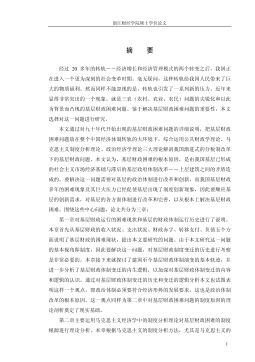
 2024-09-20 33
2024-09-20 33 -
我国煤电产业链纵向交易合约机制研究VIP免费
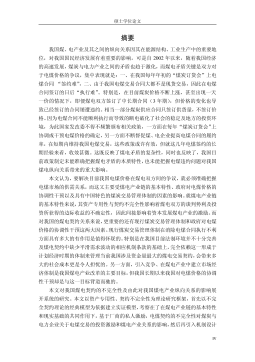
 2024-09-20 28
2024-09-20 28 -
生产要素视角下的上海市产业结构优化研究VIP免费
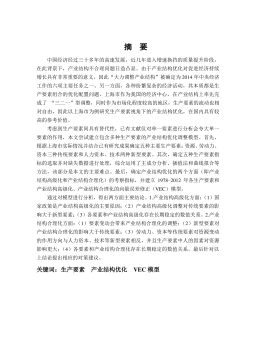
 2025-01-09 7
2025-01-09 7 -
我国银行业结构与经济结构关系研究VIP免费
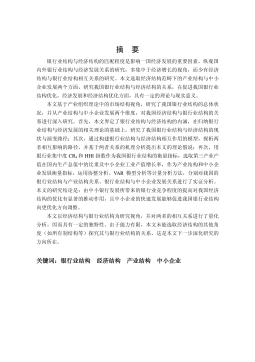
 2025-01-09 7
2025-01-09 7 -
大数据视角下农业供应链金融研究VIP免费

 2025-01-09 6
2025-01-09 6 -
跨国大型综合超市的规划研究VIP免费
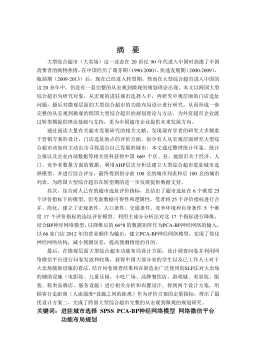
 2025-01-09 6
2025-01-09 6 -
跨境电商农产品质量安全问题研究VIP免费
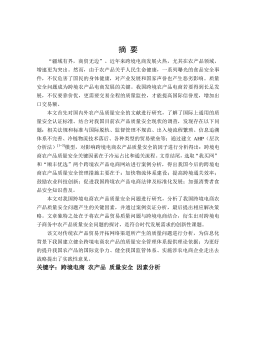
 2025-01-09 7
2025-01-09 7 -
世界市场的虚拟化与我国国际电子商务发展方向研究VIP免费
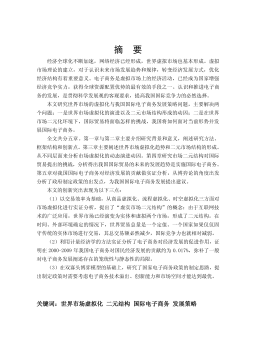
 2025-01-09 9
2025-01-09 9 -
中国政府对电力行业的价格规制问题研究VIP免费
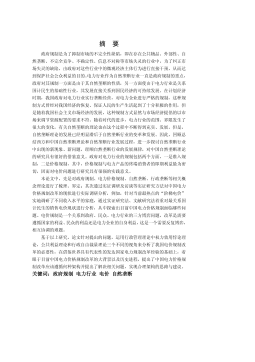
 2025-01-09 14
2025-01-09 14 -
中小企业信息化系统集成技术研究VIP免费
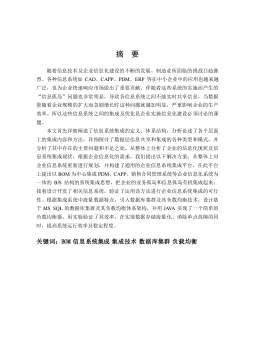
 2025-01-09 14
2025-01-09 14
作者:牛悦
分类:高等教育资料
价格:15积分
属性:71 页
大小:2.54MB
格式:PDF
时间:2025-01-09
相关内容
-

跨国大型综合超市的规划研究
分类:高等教育资料
时间:2025-01-09
标签:无
格式:PDF
价格:15 积分
-

跨境电商农产品质量安全问题研究
分类:高等教育资料
时间:2025-01-09
标签:无
格式:PDF
价格:15 积分
-

世界市场的虚拟化与我国国际电子商务发展方向研究
分类:高等教育资料
时间:2025-01-09
标签:无
格式:PDF
价格:15 积分
-

中国政府对电力行业的价格规制问题研究
分类:高等教育资料
时间:2025-01-09
标签:无
格式:PDF
价格:15 积分
-

中小企业信息化系统集成技术研究
分类:高等教育资料
时间:2025-01-09
标签:无
格式:PDF
价格:15 积分


